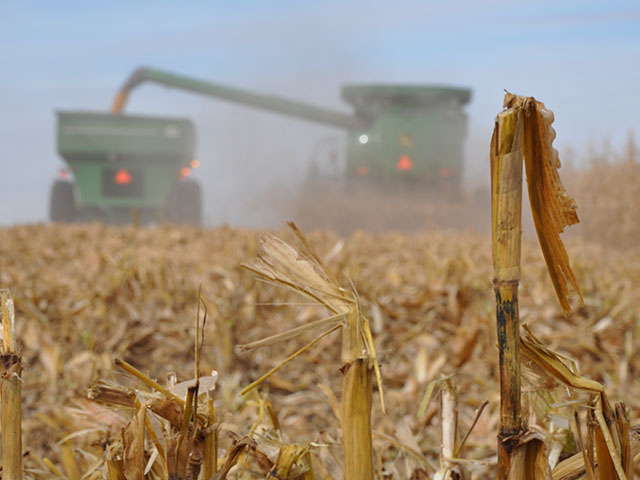Harvest Price Option Triggers
Drought-Stricken Farms May Benefit From Higher Fall Crop Insurance Prices
MT. JULIET, Tenn. (DTN) -- Higher prices at harvest could limit potential crop insurance payouts for the 2021 growing season for all except those with extreme yield losses.
The average price of the December corn futures contract during the month of October was $5.37 per bushel, while the November soybean contract averaged $12.30 per bushel during the month. Both are higher than the price guarantees last spring of $4.58 per bushel of corn and $11.87 per bushel of soybeans, which means the harvest price will be used in calculations for revenue protection policies.
While farmers have several federally subsidized crop insurance plans to choose from, revenue protection is the most popular. Revenue protection policies use a combination of the farm's historical yields and the higher of the spring or fall price to calculate an insurable level of revenue. Farmers then elect how much of that revenue to cover, which typically ranges from 75% to 85%. If revenue falls below their coverage level, due to either lower prices or yields, it will trigger an indemnity payment.
"These higher prices are going to make it really difficult to trigger indemnity loss," retired Iowa State University Extension farm management specialist Steve Johnson said. "This is good news. Farmers ought to be celebrating. Harvest prices turned out to be higher than the projected price. Prices went up."
P[L1] D[0x0] M[300x250] OOP[F] ADUNIT[] T[]
The exception is in the northwestern reaches of the Corn Belt, where persistent drought took a heavy toll on yields.
While revenue protection indemnity payments are based on a farm's actual production history, statewide yield averages from USDA's National Agricultural Statistic Service reflect this season's challenges. North Dakota farmers are expected to harvest an average of 107 bushels per acre, down from 139 bpa last year. In South Dakota, the statewide average is 133 bpa compared to last year's 162 bpa. Minnesota's yield average of 178 bpa is down from the previous year's 191 bpa, but conditions varied greatly across the state.
DTN Lead Analyst Todd Hultman said many farmers in these states planted into dry fields with confidence last spring because of the high projected prices for crop insurance.
"A lot of them said, 'We don't know if our crops are going to make it because it's real dry, but we're going in because we have a good crop insurance protection here,'" he said. Johnson said farmers need to work closely with their insurance agents to determine what indemnity they may receive this year if any.
February, when spring prices are set, was early in the bull market process, Hultman said, with prices peaking in May as China kept up an aggressive pace of purchases. "Prices are reluctant to come back down because our supplies now are so much tighter than they were perceived to be in February."
The question now is whether these high crop prices will hang around through next spring and whether they'll be enough to offset the risk rising input prices pose to farmers' bottom lines, Hultman said.
Johnson said this type of price environment makes add-on shallow-loss insurance products like the Supplemental Coverage Option and Enhanced Coverage Option look like good risk-management strategies next year despite their high premiums. That's why he's preparing in-depth discussions for winter meetings.
"ECO and SCO deserve a hard look," he said. (You can read some of DTN's previous reporting on these programs here: https://www.dtnpf.com/….)
Katie Dehlinger can be reached at katie.dehlinger@dtn.com
Follow her on Twitter at @KatieD_DTN
(c) Copyright 2021 DTN, LLC. All rights reserved.




